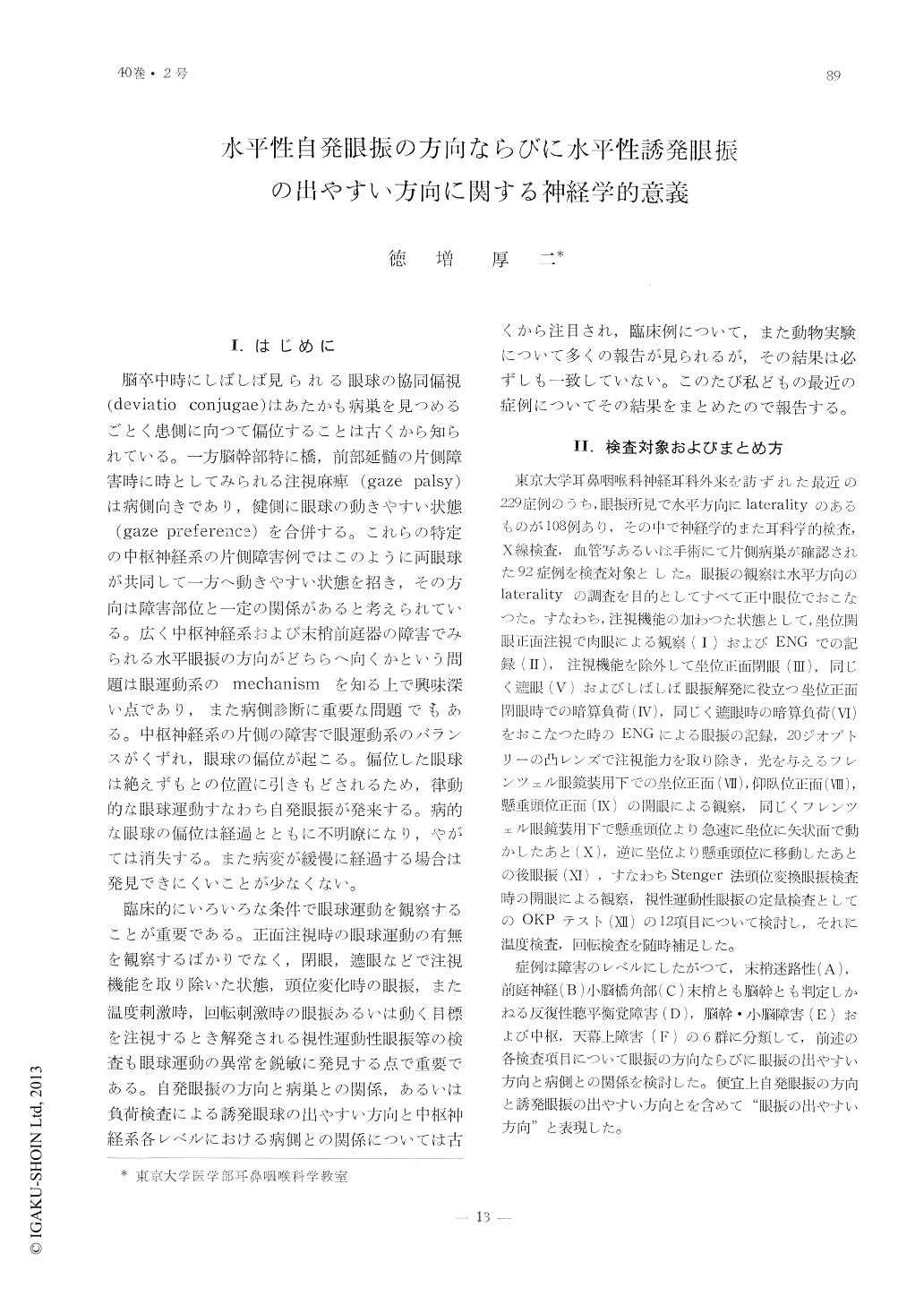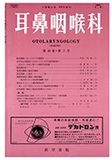Japanese
English
- 有料閲覧
- Abstract 文献概要
- 1ページ目 Look Inside
I.はじめに
脳卒中時にしばしば見られる眼球の協同偏視(deviatio conjugae)はあたかも病巣を見つめるごとく患側に向つて偏位することは古くから知られている。一方脳幹部特に橋,前部延髄の片側障害時に時としてみられる注視麻痺(gaze palsy)は病側向きであり,健側に眼球の動きやすい状態(gaze preference)を合併する。これらの特定の中枢神経系の片側障害例ではこのように両眼球が共同して一方へ動きやすい状態を招き,その方向は障害部位と一定の関係があると考えられている。広く中枢神経系および末梢前庭器の障害でみられる水平眼振の方向がどちらへ向くかという問題は眼運動系のmechanismを知る上で興味深い点であり,また病側診断に重要な問題でもある。中枢神経系の片側の障害で眼運動系のバランスがくずれ,眼球の偏位が起こる。偏位した眼球は絶えずもとの位置に引きもどされるため,律動的な眼球運動すなわち自発眼振が発来する。病的な眼球の偏位は経過とともに不明瞭になり,やがては消失する。また病変が緩慢に経過する場合は発見できにくいことが少なくない。
臨床的にいろいろな条件で眼球運動を観察することが重要である。正面注視時の眼球運動の有無を観察するばかりでなく,閉眼,遮眼などで注視機能を取り除いた状態,頭位変化時の眼振,また温度刺激時,回転刺激時の眼振あるいは動く目標を注視するとき解発される視性運動性眼振等の検査も眼球運動の異常を鋭敏に発見する点で重要である。自発眼振の方向と病巣との関係,あるいは負荷検査による誘発眼球の出やすい方向と中枢神経系各レベルにおける病側との関係については古くから注目され,臨床例について,また動物実験について多くの報告が見られるが,その結果は必ずしも一致していない。このたび私どもの最近の症例についてその結果をまとめたので報告する。
The state of the direction of spontaneous horizontal nystagmus and the directional preponderance were examined on 92 cases who were diagnosed as having unilateral lesion in the neurootologic clinic of the Tokyo University Hospital.
In the cases affccted with labyrinthine disorders, lesions in the eighth nerve, the cerebellopontine angle, the pons, the medulla oblongata and the cerebellum, the nystagmus appeared to be dominant towards the intact side, while in patients with lesions in the midbrain and supratentorial regions, it had a tendency to be rather dominant towards the affected-side.
The mechanism of induced nystagmus as well as several factors that lead to the occurrence of nystagmus were also discussed.

Copyright © 1968, Igaku-Shoin Ltd. All rights reserved.


